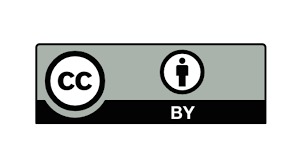Proposal for a transversal and interdisciplinary curriculum for mathematics
Propuesta para un currículo transversal e interdisciplinar para matemáticas
Main Article Content
Therefore, this research aims to develop an interdisciplinary and crosscurricular macroproject in the area of mathematics, for post-primary for Cer La Laguna de Silos. The philosophical approach of qualitative research is applied and a qualitative case study is used since “it constitutes a description and in-depth analysis of a system” (Valenzuela and Flórez 2012. p.90). It is based on international, national and local backgrounds, theories that speak of curriculum, active school, transversality and interdisciplinarity. The math teacher, the principal and four students were taken as a sample, one from each grade from sixth to ninth grade. Two semistructured interviews were applied as instruments of information collection, one at the beginning of the process to all the participants of the research and one at the end of the students; In the same way, an observation was made through a file in which the work was recorded with the transversal guide of mathematics making use of the computers. It ends with the presentation of results and the conclusions that are triangulated with the theories and objectives.
Downloads
Article Details
Arteaga, M. (2005). Modelo Tridimensional de Transversalidad. UPEL. Investigación y Postgrado. Venezuela. Vol. 20 Nº 2. 241 – 274.
Castro, J. (2001). Historia de la educación y la pedagogía. Una mirada a la configuración de un campo del saber- Recuperado de http://macroproyectoppd.pbworks.com/w/file/fetch/75492071/HistoriadelaEducacionJorgeOrlandoCastro.pdf
Guerra, M. (2009). Al Tablero. Educar para hacer parte de la Globalidad. Recuperado de http://www.mineducacion.gov.co/1621/article-183911.html
Hernández, Fernández y Baptista (2010). Metodología de la Investigación. McGrawHill. 5 Edi. 607 páginas.
Jaimes, S. (2014). Integración de actividades b-learning a las prácticas docentes para evitar la deserción de los estudiantes de bachillerato de un Centro Educativo Rural. Tesis de Maestría.
Ley General de Educación. Ley 115 de 1994.
Ramírez y Tellez (2006). La educación primaria y secundaria en Colombia en el siglo XX. Recuperad de http://www.banrep.gov.co/docum/ftp/borra379.pdf.
Redón, S. (2007). Significados de la transversalidad en el currículum: Un estudio de caso. Revista Iberoamericana de Educación. 43(2). 1-14.
Rua, N. (2005). Diseño de una estrategia metodológica de trabajo por microproyecto para la formación de competencias específicas y universales en prospectiva tecnológica y gerencial. Recuperado de http://cdim.esap.edu.co/BancoMedios/Documentos%20PDF/microproyecto%20sobre%20prospectiva%20y%20gc.pdf.
Torres, T.& Sala, M. (2011). La transversalidad como instrumento para mejorar el aprendizaje, Revista electrónica sobre la enseñanza de la Economía Pública. Lleida, España. 9. 55-68.
Torres, J. (1994). Globalización e interdisciplinariedad: el curriculum integrado. Morata. España. Ed. 5. 279
Valenzuela y Flórez (2012). Fundamentos de la Investigación Educativa.







